A WHOLE NEW WORLD
Using books to help teach students about Colonial America
Introduction | Background Knowledge | Activities | Extensions | Standards
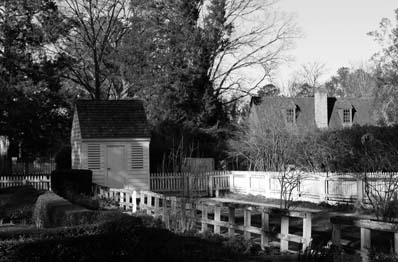
Introduction
In 1607, three ships - the Susan Constant, the Godspeed, and the Discovery - found land on the coast of what is now Virginia. The men on the ships settled in the marshland and persevered to establish the first permanent English colony in the new world. They called it Jamestown. 21st-century students struggle to make connections to the 18th-century world. Using books can help bring the Colonial Period to life.
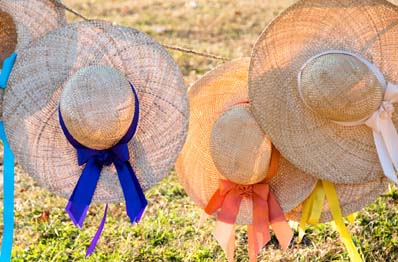
Background Knowledge
The Colonial Era in America spans from 1607, when the first colonists arrived at Jamestown, to 1776, when the Second Continental Congress adopted the Declaration of Independence. The settlement at Jamestown, where only 60 of the original 500 colonists survived the first winter, grew into 13 colonies during those 169 years. The original ships only carried men, but the ships that included Africans and the first women arrived at Jamestown in 1619. After seeing the success at Jamestown, the ships carrying both men and women arrived further north and founded the Plymouth Colony in 1620, expanding to found the city of Boston by 1630. The northern colonies expanded at a faster rate than the southern colonies.
But the colonization was not without conflict. The New World was not open, uninhabited land. Indigenous peoples of the Americas had lived on the land for thousands of years. The Spanish had laid claim to Florida, founding St. Augustine in 1595. When the English colonists began to expand their territory, they clashed with these groups. The Powhatan Wars, Queen Anne's War, King George's War, and the French and Indian Wars had the colonists and the British clasing with the French and Native People and winning them expanded the British Territory, which included Florida. The settlers also clashed with each other. From Bacon's Rebellion in 1675 to the Salem Witch Trials of 1692 to the founding of Georgia as a penal colony in 1732, the Colonial Era was full of conflict.
The Colonial Period began the transition to the Revolutionary Era with the passage of the Stamp Act in 1765. The Stamp Act directly impacted the colonists by requiring all legal documents and newspapers to be taxed. This was the first of many taxes that led to the frustration with "taxation without representation" and, eventually, the Revolutionary War.
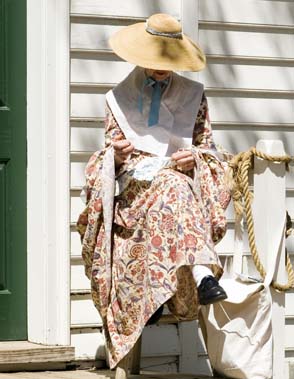
ACTIVITIES
Selective List of Fiction Picture Books
-
The Baker's Dozen: A Colonial American Tale by Heather Forest (ISBN 9781939160706)
- A baker's dozen is widely known to be thirteen of something - thirteen cookies, thirteen loaves of bread, thirteen cakes. This book, available in print and at Epic! Digital Library (TeachersFirst review), is the legend of why a baker's dozen is thirteen and not twelve.
- Visit the Ducksters (TeachersFirst review) lesson on Colonial America for Kids. A printable quiz is available, or it can be taken online to check for comprehension.
-
Ox-Cart Man by Donald Hall (ISBN 9780140504415)
- This Caldecott winner follows the ox-cart man as he sells his wares at the market and buys provisions for his family in a New England town. Although it is written for younger students, this gives an overview of how a colonial family navigated the economy of the time.
-
Homespun Sarah by Verla Kay (ISBN 9780399234170)
- This story is written in rhyming verse and tells about Sarah, a young girl in Pennsylvania, who has outgrown her dress. The story and the language are simple but historically accurate.
- Explore colonial dress with this video from Mackinac State Historic Parks.
- Join the Newport Preservation Society in a discussion about homespun fabric.
-
Hornbooks and Inkwells by Verla Kay (ISBN 9780399238703)
- School in the Colonial Era was much different than it is today. Readers can join Peter and John Paul during their typical school day.
- School in the colonies looked different depending on location. The Northern Colonies established public schools while families in the Southern Colonies tended to homeschool. Religious schools were established in the middle colonies. Learn more at these websites:
- Create Venn Diagrams using Class Tools (TeachersFirst review) to compare and contrast "Life in Colonial Times" to "Life in Modern Times." Students could work in groups to create concept-specific diagrams in terms of daily life, school, homes, clothing, etc.
Selective List of Fiction Chapter Books
-
Blood on the River by Elise Carbone (ISBN 9780142409329)
- Young Samuel Collier joins John Smith at Jamestown. The New World is not what he thought it would be. Samuel interacts with the Algonquin people and sees John Smith grow to lead the colony. He also learns a great deal about himself.
- Elisa Carbone offers a study guide on her website. In addition to thoughtful discussion questions that will spark insightful conversation, there are also activities for students to do for each chapter to deepen their understanding.
- Learn more about the Jamestown Colony with Virtual Jamestown (TeachersFirst review). This site is geared more to secondary students, but the information can be shared with upper elementary students.
-
Poison in the Colony by Elise Carbone (ISBN 9780425291856)
- The year is 1622. The place is Jamestown, Virginia. The colony is thriving and starting to expand with the first ships of English women and African American enslaved people. The first representative government has been established in the New World. Inside the walls of Jamestown, all is well. But outside of the walls, tensions are brewing with the native Algonquin people. Virginia Laydon, born at the end of the first novel in this series, Blood on the River, is now older and has learned that she has the sight. Fearful that she will be tried as a witch, her mother warns her to keep her gift hidden. Virginia is torn but knows that if her secret is revealed, she will be killed. As Virginia and her friend Samuel observe the growth of the colony, she struggles with her gift. Virginia finds confidence as she learns to navigate the world when she knows she is different.
-
Meet Felicity by Valerie Tripp (American Girls Collection) (ISBN 9781562470043)
- The American Girl Company released a Revolutionary War-era doll named Felicity. With her release, a 6 book companion book series was released as well. Meet Felicity is the first book in the series and tells Felicity's story. This book introduces the reader to Felicity and a horse named Penny. Penny is owned by a cruel man, and Felicity tries to figure out to save her. The other 5 books in the series dive more deeply into Felicity's life in 1774 in Williamsburg, Virginia.
- A movie about Felicity was made after the doll and books were released. The star of the movie takes fans on a tour of Colonial Williamsburg.
- Teachers can extend the book with a Teacher’s Guide from American Girl.
- Willow Chenoah created an in-depth learning experience, complete with links to resources and activities.
-
Our Strange New Land: Elizabeth's Jamestown Colonial Diary by Pat Hermes (My America Series) (ISBN 9780439368988)
- This book is written in diary form, and will bring history to life as 9-year-old Elizabeth Barker lands in the New World. She meets Captain John Smith and Pocahontas. There are 3 books in this Jamestown series.
- Scholastic has a great website to support the Dear America Series. My America is part of that series. Organized by period, this site has information about the era, downloadable materials curated in partnership with the Library of Congress, and whiteboard-ready slides. There are also recipes and information about the activities of the period.
Selective List of Nonfiction Books
-
Roanoke Island by Kevin Blake (ISBN 9781627245210)
- Before Jamestown and Plymouth, Englishman John White returned to the colony that he had left on the Outer Banks of North Carolina. When he arrived, all of the people were gone. At present, historians still do not know what happened to the colonists. This book is available in print and on Epic!
- The mystery of Roanoke Island still fascinates researchers. Students can learn more about the Lost Colony at Fort Raleigh National Park and the Roanoke Island Festival Park.
-
Explore Colonial America by Verna Fisher (ISBN 9781934670378)
- This book teaches students about the colonial period. It is full of nonfiction text features to help navigate the information. It also has projects for students to try - from making soap boats to cooking Johnnycakes. There are chapters about homes, schools, food, and clothing. This is a great introduction to life in the Colonial Era.
-
The Jamestown Colony Disaster by Marcia Amidon Lusted (ISBN 9781512411164)
- Life at the first permanent colony in the New World was not easy. The settlers made a series of bad choices in choosing a place to live, and many did not survive. This book, available in print or on Epic!, describes the struggles and the effects of the choices the settlers made. It lends itself perfectly to a connection to cause and effect lessons in the ELA curriculum.
-
The Dreadful, Smelly Colonies by Elizabeth Raum (ISBN 9781429663519)
- Life in Colonial America was much different from life today. People bathed once a month. They cut the mold off the cheese and pulled bugs out of the flour. Get students interested in Colonial life by showing them the gross side of things.
- Find more information about colonial hygiene from Pennsbury Manor and Graeme Park.
- Learn more about colonial cooking here, from the History Channel, and Colonial Williamsburg.
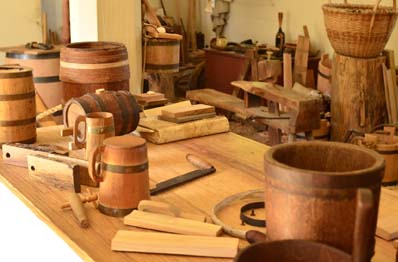
EXTENSIONS
-
A Colonial Tour from TeachersFirst
- TeachersFirst has curated resources for each of the major colonies that were active during the Colonial Era. In addition to providing general information, there are also websites for students and teachers to explore. This is an excellent landing page to start researching the original colonies. It includes links to virtual field trips.
-
Which Colony is Best?
-
Introduce a research component to your study of the Colonial Era. Encourage students to learn more about the 13 original colonies. They can research the basic information - location and date founded - and also dig deeper to learn about the colonists and their lives.
-
Ideas for research projects
- One project idea, created by the School District of Clayton in Missouri, includes a rubric and a graphic organizer for research and can be found here.
- Another great project idea was created by Mr. Lestage at George R. Austin Intermediate School in Massachusetts and can be found here. This includes examples of the brochure.
- You could also use a pre-formatted research project created by The Source for Learning and found here. This thorough project includes pre-made slides for all of the colonies, clear instructions, images, maps, and other helpful resources. Add or delete slides as you need.
-
Student product ideas
- Non-technology approach: Students can create a poster or brochure using paper and available art supplies.
-
Technology approach:
- Use Adobe Express (TeachersFirst review) to create a presentation sharing why the colony is the best.
- Try Canva (TeachersFirst review) to create a drag and drop presentation.
-
Ideas for research projects
-
Introduce a research component to your study of the Colonial Era. Encourage students to learn more about the 13 original colonies. They can research the basic information - location and date founded - and also dig deeper to learn about the colonists and their lives.
-
Virtual Reality
- The original 13 colonies and the parks and museums to learn more are on the East Coast. For many students, a field trip is out of the question. The virtual field trips and museum websites are amazing and have informative and interactive virtual visits, but incorporating a virtual reality field trip is a way to bring the location to the classroom. Use Google Expeditions to bring the world into the classroom. Enhance the experience with cardboard viewers.
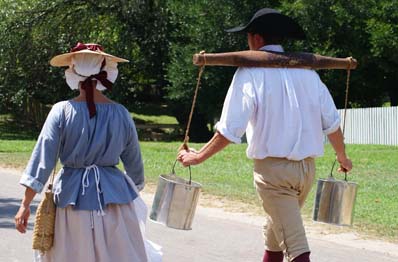
CORRELATION TO STANDARDS
-
AASL National School Library Standards
- Inquire Shared Foundation, Think Domain - Learners display curiosity and initiative by: 1. Formulating questions about a personal interest or a curricular topic. 2. Recalling prior and background knowledge as context for new meaning
- Inquire Shared Foundation, Grow Domain - Learners participate in an ongoing inquiry-based process by: 1. Continually seeking knowledge
- Include Shared Foundation, Create Domain - Learners adjust their awareness of the global learning community by:. 2. Evaluating a variety of perspectives during learning activities
- Include Shared Foundation, Grow Domain - Learners demonstrate empathy and equity in knowledge building within the global learning community by: 2. Demonstrating interest in other perspectives during learning activities
- Curate Shared Foundation, Create Domain - Learners gather information appropriate to the task by: 2. Collecting information representing diverse perspectives
- Explore Shared Foundation, Think Domain - Learners develop and satisfy personal curiosity by: 1. Reading widely and deeply in multiple formats and write and create for a variety of purposes. 2. Reflecting and questioning assumptions and possible misconceptions.
- Explore Shared Foundation, Share Domain - Learners engage with the learning community by: 1. Expressing curiosity about a topic of personal interest or curricular relevance
-
ISTE Standards for Students
- Knowledge Constructor - 3d. Students build knowledge by actively exploring real-world issues and problems, developing ideas and theories and pursuing answers and solutions.
